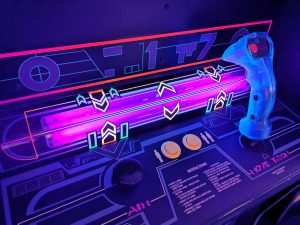Haptic Feedback Suits: Feeling Molecular Structures in Chemistry
Welcome to the world of haptic feedback suits, where science and technology meet to provide a truly immersive experience. These suits are revolutionizing the way we interact with our environment by allowing us to feel and touch digital content. As a chemistry enthusiast, I couldn’t help but wonder – what can haptic feedback suits do for the world of chemistry? Well, it turns out that these incredible suits can revolutionize the way we understand and study molecular structures. In this article, we will dive deeper into the world of haptic feedback suits and how they are changing the game for chemists. 
The Science Behind Haptic Feedback Suits
Before we delve into the role of haptic feedback suits in chemistry, let’s understand the technology behind these suits. Haptic technology is based on the science of touch sensation, which involves the use of vibrations or motion to recreate the sense of touch. This sensation is achieved through the use of sensors, motors, and actuators embedded within the suit. When these sensors detect input, such as a digital representation of a molecule, they send signals to the motors and actuators, which then produce vibrations and simulate the sense of touch on the user’s skin. The result is an experience that feels real and tangible, making it an ideal tool for visualizing and understanding complex concepts such as molecular structures.
Revolutionizing Chemistry Education with Haptic Feedback Suits
Chemistry education has always been challenging, with its abstract concepts and microscopic entities. Traditionally, students have had to rely on 2D images and models to understand molecular structures, which can be quite confusing and difficult to grasp. However, with the introduction of haptic feedback suits, students can now feel and touch these structures, bringing them to life in a whole new way. The sensory experience provided by these suits makes it easier for students to understand the spatial arrangement and bonding of atoms, leading to a deeper understanding of chemistry.
Exploring Molecular Structures in 3D
Haptic feedback suits have the ability to provide a 3D representation of molecular structures, giving students a more accurate and realistic view. With the use of digital modeling software, these suits allow students to manipulate and rotate the structures, giving them a full view of the molecule from all angles. This capability makes it easier for students to visualize and understand the spatial orientation of atoms within a molecule, which is a crucial aspect of chemistry.
Sensory Learning Aids in Retention of Information
Studies have shown that incorporating sensory experiences into learning aids can significantly improve information retention. Haptic feedback suits engage multiple senses, including touch, which has been found to have a strong link to memory retention. When students can feel and touch the molecular structures, they are more likely to remember the information and understand it better. This is because touch sensation is linked to our brain’s emotional centers, making the learning experience more engaging and memorable.
Real-World Applications in Chemical Research
Besides education, haptic feedback suits also have real-world applications in chemical research. Chemists and scientists can use these suits to manipulate virtual molecules and test various reactions and scenarios before carrying out actual experiments. This can save time and resources and provide a safer environment for conducting research. Additionally, haptic technology can be used to simulate chemical reactions in real-time, allowing scientists to gain a deeper understanding of the mechanics behind these reactions.
The Future of Haptic Feedback Suits in Chemistry
The introduction of haptic feedback suits in the world of chemistry has opened up a whole new world of possibilities and applications. As the technology continues to evolve, we can only imagine the potential it holds for the future of chemistry. Imagine being able to feel and touch molecules in virtual reality, making it possible to study even the most complex structures with ease. With haptic feedback suits, chemistry education and research can reach new heights, providing a more engaging and immersive experience for all.
Final Thoughts
In conclusion, haptic feedback suits are transforming the way we understand and interact with molecular structures in chemistry. With their ability to provide a realistic sensory experience, these suits are making chemistry education more engaging and effective. Additionally, they have practical applications in chemical research, making it easier and safer for scientists to explore and understand the world of molecules. As technology continues to advance, we can only imagine the potential of haptic feedback suits and the role they will play in shaping the future of chemistry.











